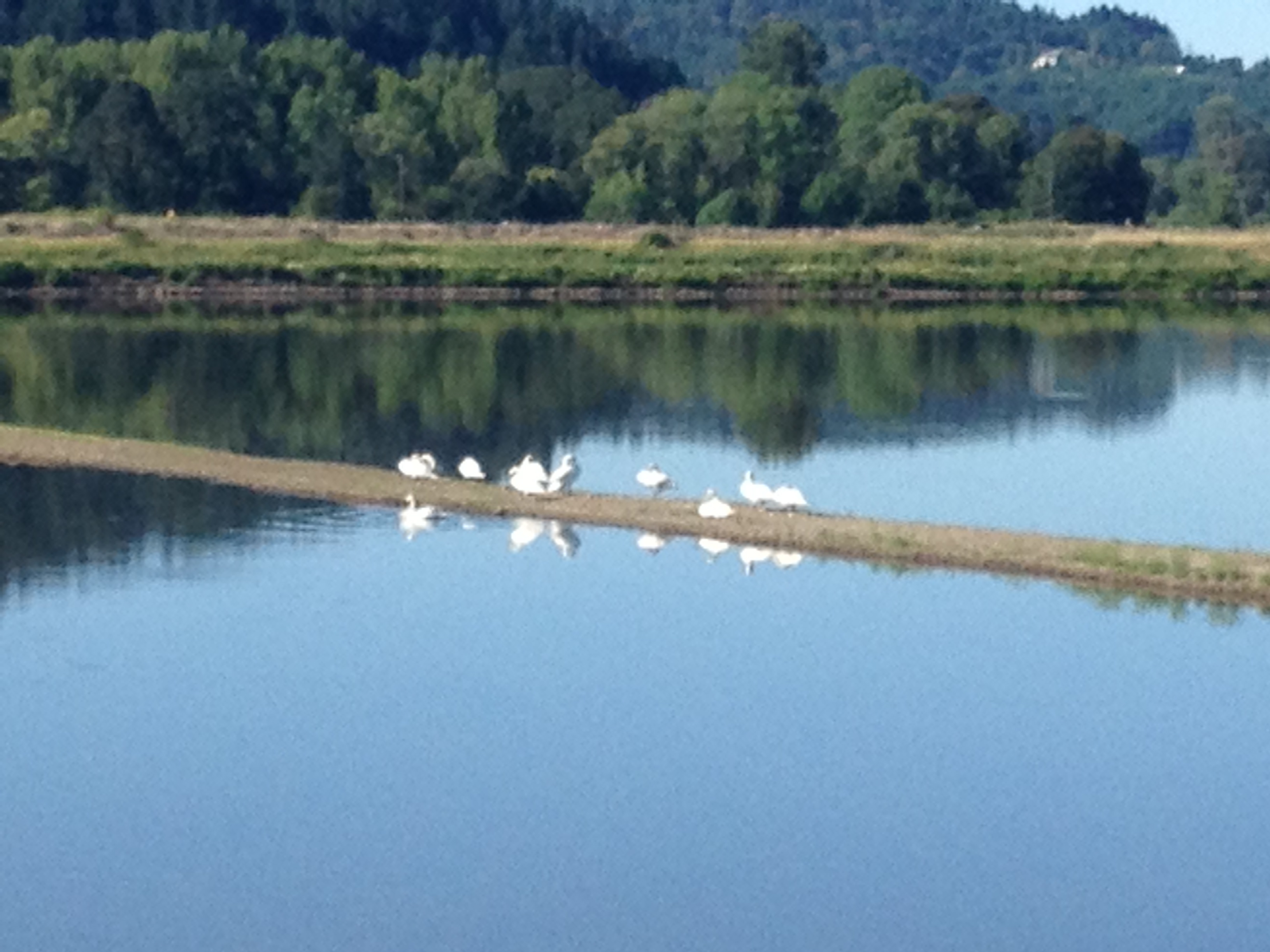Mute Swan (Cygnus olor) on Jun 30, 2013
Submitter does not have a specimen
EDRR Status: Local expert notified
Description of specimen
A flock of what I was told (by people with telescopic camera lenses) were mute swans. The attached photo was taken with my iPhone, so there is not a lot of detail present. I was told that they would chase off the Tundra swans.


Reporter
June 30, 2013, 3:55 a.m.
Mute Swans were introduced to the United States in the mid-1800s by well-intentioned citizens that wanted the large white birds to grace their city parks and estates. But like most invasive species, Mute Swan populations expanded, creating serious problems for some native wildlife species.
The problems Mute Swans cause are a result of their size, aggressiveness, and voracious appetite for aquatic vegetation. These 40-plus pound birds aggressively defend their territories, and have been known to attack and displace just about any size, age, and species of native waterfowl. In Maryland, a population of 4,000 Mute Swans now exists in and around Chesapeake Bay—from five captive Mute Swans that escaped in 1962. This large population of feral non-native birds is causing a decline in native Tundra Swans, affecting crabbing and fishing because of the estimated 9 million pounds of submerged aquatic vegetation the swans eat annually, and displacing state-threatened bird species, such as black skimmers.
The Mute Swan is the only bird on Oregon’s 100 Worst List because of what we know about this species as its population has expanded in other states.Well-intentioned people value the beauty of this bird, but it is important we understand what can happen to Oregon native fish and wildlife when non-native species like Mute Swans are introduced.
Oregon is one of two states that makes it illegal to import, possess, or sell Mute Swans—Washington is the other. Despite these laws, Mute Swans are found on a few scattered lakes in the state.
How did Mute Swans arrive on Oregon’s landscape? It is thought that the first introductions may have occurred in 1921 in Ashland, followed by introductions in the 1940s along the Deschutes River in Bend. From 1985 to 1995, the breeding population in central Oregon increased from four to 56 birds. Seeing another Chesapeake Bay in the making, the state swiftly took action and implemented population controls. The result is a handful of infertile birds in the downtown Bend area. A few known pairs occur in Salem and the Portland metropolitan area.
It can be very difficult for the public to understand the need to reduce or eliminate a species they have grown to enjoy. But we must remain vigilant in our efforts to protect Oregon landscapes and the native fish and wildlife that call this place home. If we don’t, we stand to lose far more than we could possibly ever gain by the introduction of a non-native invasive species.
The Oregon Department of Fish and Wildlife is working on this issue, and will deal with the birds humanely and in the best interests of protecting Oregon's unique natural resources.
Thank you again for your report.
Lisa DeBruyckere
July 5, 2013, 3:24 a.m.